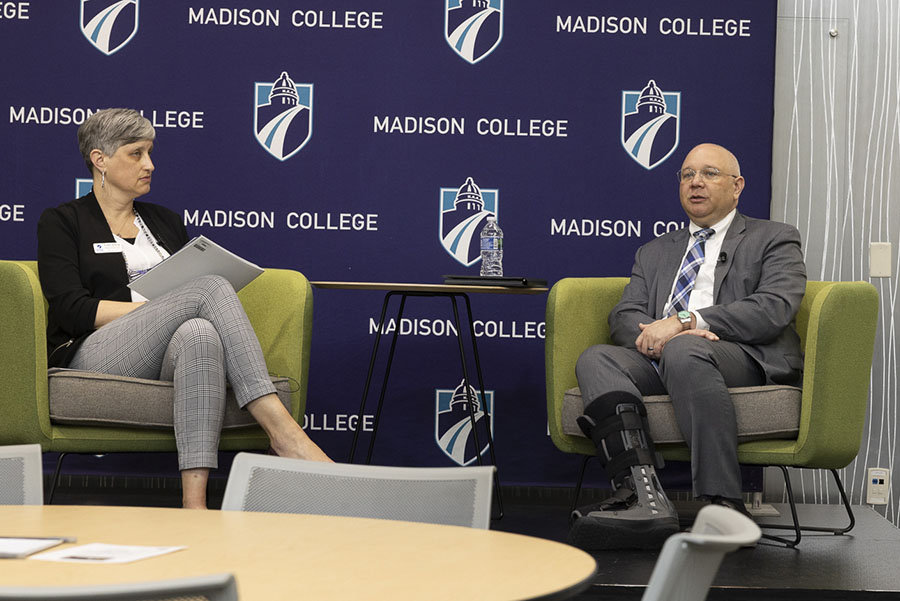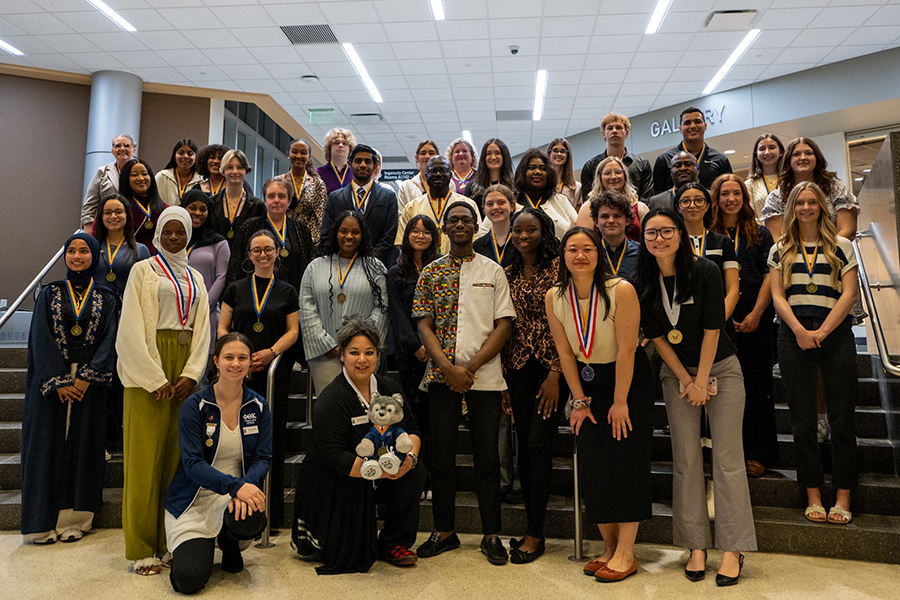Choosing from a table full of multi-colored headscarves, Tracey Koppen wrapped a red and blue patterned one over her head. She took a few steps around the Truax cafeteria, slightly loosening the scarf to let a little of her hair peek out, wondering if others noticed the change in her appearance.
“I feel very, very, very self-conscious right now, just so you know,” Koppen said when she arrived back at the table of scarves where a group of male and female students had gathered.
“You get used to it,” replied Nimera Ali of the Muslim Student Association.
Ali and fellow members of the Muslim Student Association held Hijab Day in the Truax cafeteria on Friday, March 15. They set up a small table of scarves and fielded questions from fellow students in an effort to create more awareness about one of the most recognizable symbols of Muslim identity: the hijab, or veil.
They helped non-Muslim female students like Koppen wrap the scarves so they could experience wearing hijab, albeit for a short while.
“It’s awesome thing that they are doing it. I’m glad I decided to stop by,” Koppen said.
Zeynab Ahmed, secretary of the Muslim Student Association, explained that the group had just been formed earlier in the Spring 2013 semester and held Hijab Day to educate fellow students about the practice of wearing hijab and to counter media stereotypes.
While Hijab is an Arabic word meaning “barrier,” it is commonly used to refer to the headscarf, which is worn in accordance with the Quran’s call for modesty. Some Muslims choose not to veil, and styles of coverage vary across cultures and Islamic denominations.
“It’s not just about covering the hair, it’s about the ears and the neck. It’s not just about a cloth,” Ahmed said. “I don’t see it as just a piece of cloth. It makes me stand out. I’m a Muslim. You see it. You can’t really hide my religious identity.”
She also mentioned that it gave her a feeling of protection.
She is originally from Kenya and, when she arrived in Madison in 2011, she encountered noticeable, but friendly, curiosity about her coverage. People often wanted to know the significance of it.
“I’ve never really encountered anybody that’s been rude to me because of what I wear, but I’ve gotten those weird looks,” Ahmed said.
She felt that Hijab Day was a positive experience and gave the Muslim Student Association and fellow students an opportunity for conversations that might have not occurred otherwise.
“People were generally interested in learning why we wear it,” she said.
The group plans to hold future events to encourage interfaith and intercultural inclusion.


























